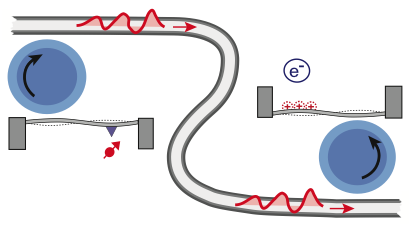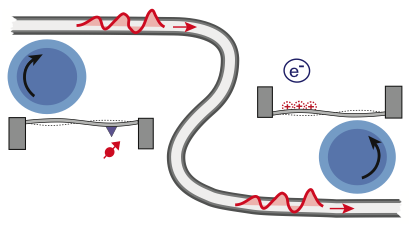Qubits, meet photons
Optomechanics, in which light couples to a nanoscale mechanical device (usually an oscillator), is an emergent area of activity in the field of quantum optics and quantum computation, particularly now that experimentalists have cooled certain devices to their quantum ground state. Various proposals have been made regarding so-called light-matter interfaces; the primary challenge appears to be that of developing an optical interface for qubits, which are typically based on spin or charge.
Writing in Physical Review Letters, Kai Stannigel, at the Institute for Quantum Optics and Quantum Information in Innsbruck, Austria, and colleagues from Innsbruck, Harvard University, and the University of Copenhagen, describe a scheme for such a transducer (conversion device). The scheme—in which a nanomechanical resonator mediates interactions between the qubits and light—is versatile, as it works for qubits that do not interact with light by themselves. The authors expect the proposal to lead to a range of quantum devices with different types of solid-state qubits (spin, charge, or superconducting), thereby realizing concepts first introduced for atomic qubits in Fabry-Pérot cavities. The proposed device, which takes into account the disruptive effects of noise and loss, may serve as a central building block in various quantum communication, readout, and measurement applications. – Sami Mitra





